

The 13th Annual Advances in Forensic Pathology Conference was held on May 16-17, 2024, at Weber’s Inn in Ann Arbor, Michigan. Hosted by the University of Michigan Department of Pathology, the well-attended conference packed the conference room with medical examiners, coroners, law enforcement, forensic pathologists, pathology assistants, forensic residents and fellows, and others.
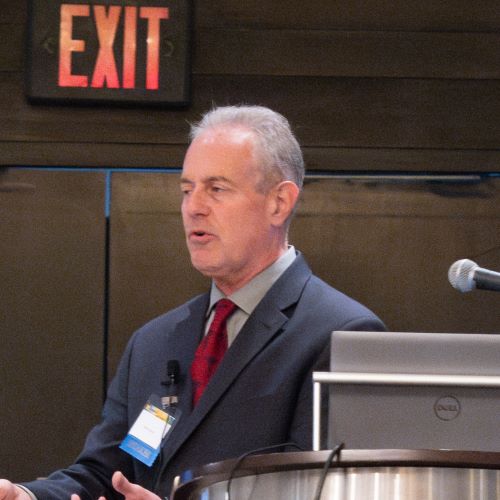
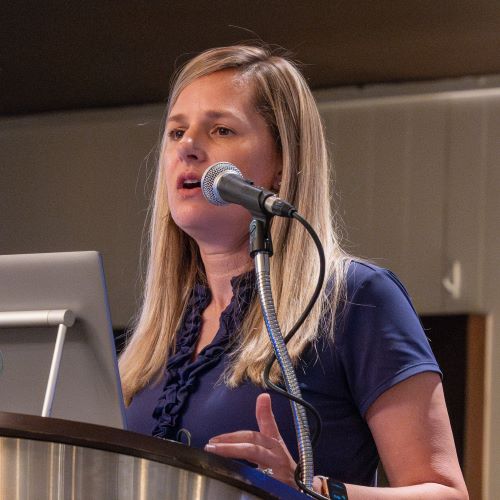 The conference, led by Dr. Allecia M. Wilson and Dr. Jeffrey Jentzen, kicked off with a series of presentations from partnering organization, International Association of Coroners and Medical Examiners (IACME), on the opioid epidemic. Drs. James Caruso and Erin Worrell provided an overview of the history of opioids, the role of the medicolegal death investigator, and bias. Dr. Worrell followed this by case presentations surrounding scene safety and scene investigation, reviewing how she approaches scene investigations to determine if the scene reflects a drug-related death and how she finds hidden drugs. Dr. Caruso then discussed the role of the autopsy and how to manage risk when families do not want autopsies performed. Use of imaging, blood tests, and external review may be the limit of what is permitted due to religious convictions. He then continued with a discussion of toxicology and death investigation. Sometimes toxicology does not provide conclusive results and microscopic exam may be needed to reveal evidence of chronic drug use, such as granulomas in the lungs from impurities in drug injections. He recommends blood for toxicology testing be taken from femoral blood and vitreous fluid be used for postmortem chemistry for glucose and electrolytes.
The conference, led by Dr. Allecia M. Wilson and Dr. Jeffrey Jentzen, kicked off with a series of presentations from partnering organization, International Association of Coroners and Medical Examiners (IACME), on the opioid epidemic. Drs. James Caruso and Erin Worrell provided an overview of the history of opioids, the role of the medicolegal death investigator, and bias. Dr. Worrell followed this by case presentations surrounding scene safety and scene investigation, reviewing how she approaches scene investigations to determine if the scene reflects a drug-related death and how she finds hidden drugs. Dr. Caruso then discussed the role of the autopsy and how to manage risk when families do not want autopsies performed. Use of imaging, blood tests, and external review may be the limit of what is permitted due to religious convictions. He then continued with a discussion of toxicology and death investigation. Sometimes toxicology does not provide conclusive results and microscopic exam may be needed to reveal evidence of chronic drug use, such as granulomas in the lungs from impurities in drug injections. He recommends blood for toxicology testing be taken from femoral blood and vitreous fluid be used for postmortem chemistry for glucose and electrolytes.
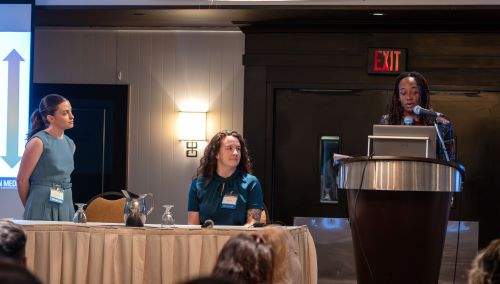 Following these IACME-sponsored talks, a team from U-M, Jessica Hagen, D-ABMDI, Alexis Snyder, PA (ASCP), and Dr. Allecia M. Wilson presented on the past, present and future of Michigan’s Opioid Fatalities. Jessica presented on the history of heroin and fentanyl deaths in Michigan, from no fentanyl deaths to 57% of drug fatalities related to fentanyl in 2022. Alexis then followed by steps that are being taken by Michigan Public Health to reduce fatalities in the state and Dr. Wilson discussed a national drug settlement that will be providing financial resources to counties in Michigan to fight drug abuse and death over the next 18 years.
Following these IACME-sponsored talks, a team from U-M, Jessica Hagen, D-ABMDI, Alexis Snyder, PA (ASCP), and Dr. Allecia M. Wilson presented on the past, present and future of Michigan’s Opioid Fatalities. Jessica presented on the history of heroin and fentanyl deaths in Michigan, from no fentanyl deaths to 57% of drug fatalities related to fentanyl in 2022. Alexis then followed by steps that are being taken by Michigan Public Health to reduce fatalities in the state and Dr. Wilson discussed a national drug settlement that will be providing financial resources to counties in Michigan to fight drug abuse and death over the next 18 years.
The afternoon sessions kicked off with Dr. Carl Schmidt discussing AI applications in forensic medicine and how computer systems can help automate autopsy reports, sort and interpret data contained in various documents, and conduct pattern recognition activities. He reviewed a study on using AI to identify gunshot wounds and found that the model he tested was 87.99% accurate, with classification of entrance wounds at 88.19% and of exit wounds at 87.71%. He then continued with a discussion on the postmortem microbiome, which remains stable in average conditions for about 48 hours after death. He discussed antibiotic resistance and using the microbiome within the first 48 hours to monitor the community’s level of antibiotic-resistant bacteria as part of public health surveillance.
Dr. Steven Clark continued the afternoon session discussing a CDC Foundation study on developing synoptic autopsy reports that are consistent, contain useful data for the users (including legal, insurance, public health, families, researchers, medical examiners, organ and tissue procurement organization, and law enforcement) prepared in such a way that it is understandable to the many users who do not have medical training. This is a project still in process and he admits that some cases will not work well for synoptic reporting, but it could be useful for the many routine case reports.
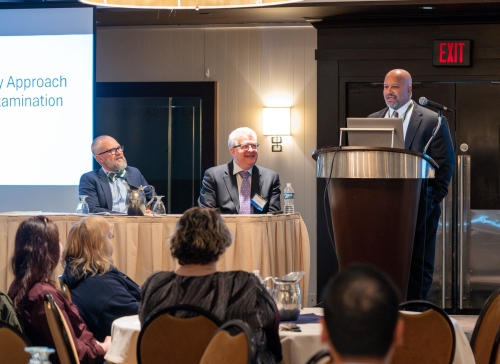 A case of severe elder abuse was then discussed by Dr. Brian Hunter who reviewed how he used odontology and forensic anthropology to uncover evidence of significant and long-term elder abuse, which resulted in criminal penalties for the caregivers. Juniper Fedor, MD, PA (ASCP)CM, D-ABMDI rounded out the afternoon’s sessions discussing gender identity in death investigation and the importance of using respectful language and speaking with the deceased’s chosen family, as many have strained relationships with their birth families. The rules for vital statistics need to be followed in the specific jurisdiction, so it is important to be familiar with these. Many require the death certificate to be consistent with the birth certificate as opposed to the chosen name and lived gender.
A case of severe elder abuse was then discussed by Dr. Brian Hunter who reviewed how he used odontology and forensic anthropology to uncover evidence of significant and long-term elder abuse, which resulted in criminal penalties for the caregivers. Juniper Fedor, MD, PA (ASCP)CM, D-ABMDI rounded out the afternoon’s sessions discussing gender identity in death investigation and the importance of using respectful language and speaking with the deceased’s chosen family, as many have strained relationships with their birth families. The rules for vital statistics need to be followed in the specific jurisdiction, so it is important to be familiar with these. Many require the death certificate to be consistent with the birth certificate as opposed to the chosen name and lived gender.
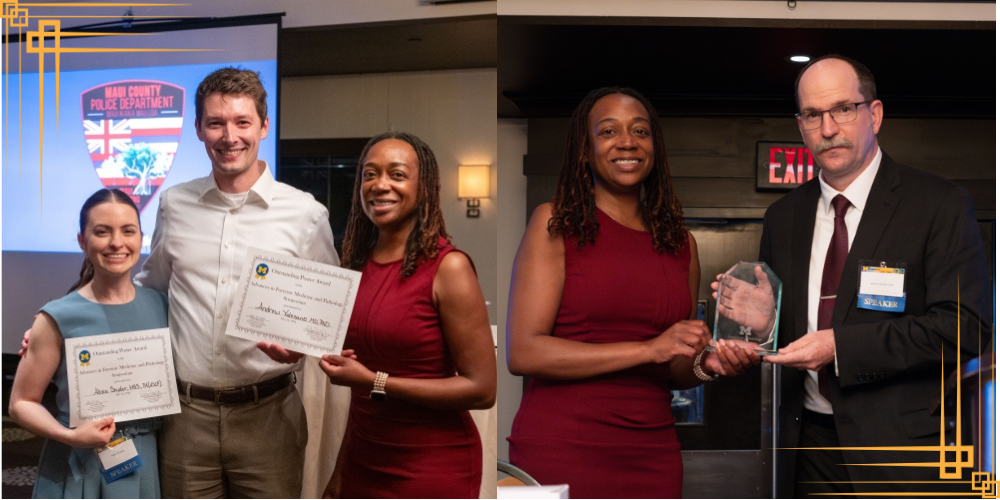 A guest reception and poster presentation, followed by dinner and the Delores M. Finger and John E. Finger, MD Forensic Lecture rounded out the evening. Outstanding Poster Awards were presented to Dr. Andrew Valesano for his poster on Sudden Death Due to Gall Bladder Perforation, and to Alexis Snyder, PA (ASCP) for her poster on Medical Student Exposure to Autopsy Pathology Survey Results. Dr. Jeremy Stuelpnagal, MD, was our honored lecturer with The Maui Fire Disaster: Medical Examiner as First Responder, walking the audience through the Lahaina fire from August 8, 2023. Through the efforts of multiple organizations coming together, and cadaver dogs, they were able to locate all 3,000 missing persons, and ID all those who perished, with the exception of one homeless individual who has not yet been found. The first autopsy was conducted on August 11, 2023, with the last recovery taking place on February 9, 2024. They used dental records, fingerprints, DNA, medical devices, x-rays, and personal property to identify victims. Remains, which were often charred pieces of bone, were respectfully returned to families for burial.
A guest reception and poster presentation, followed by dinner and the Delores M. Finger and John E. Finger, MD Forensic Lecture rounded out the evening. Outstanding Poster Awards were presented to Dr. Andrew Valesano for his poster on Sudden Death Due to Gall Bladder Perforation, and to Alexis Snyder, PA (ASCP) for her poster on Medical Student Exposure to Autopsy Pathology Survey Results. Dr. Jeremy Stuelpnagal, MD, was our honored lecturer with The Maui Fire Disaster: Medical Examiner as First Responder, walking the audience through the Lahaina fire from August 8, 2023. Through the efforts of multiple organizations coming together, and cadaver dogs, they were able to locate all 3,000 missing persons, and ID all those who perished, with the exception of one homeless individual who has not yet been found. The first autopsy was conducted on August 11, 2023, with the last recovery taking place on February 9, 2024. They used dental records, fingerprints, DNA, medical devices, x-rays, and personal property to identify victims. Remains, which were often charred pieces of bone, were respectfully returned to families for burial.
Day two of the conference began with the conference’s favorite judges, Stephanie Domitrovich, JD, PhD, and W. Milton Nuzum III, JD, as they discussed cases surrounding “Excited Delirium” and deaths while in police custody. This was followed by Dr. Jeffrey Jentzen discussing the case of George Floyd, who also perished while in police restraint and for which excited delirium was used as a reason for the restraint. He reviewed the autopsy procedures undertaken by Drs. Michael Baden and Dr. Allecia M. Wilson and the conclusion that the death was a homicide.
Dr. Jacqueline Parai followed with case studies of atypical suicides including sharp force injuries and gunshot wounds. She then discussed a literature review of suicides reviewing the types, locations, and number of wounds most often seen as well as setting details. Dr. Randy Tashjian continued with a discussion on the neuropathology of chronic traumatic encephalopathy caused by brain injuries often seen in boxers, football players and the military. Findings of perivascular p-tau clusters deeper than the sulcal depth is diagnostic. This is a progressive and fatal neurodegenerative disease with behavioral, cognitive, and/or motor symptoms. The morning concluded with the judges returning to discuss the prosecution of drug deaths and how they differ between the United States and Canada.
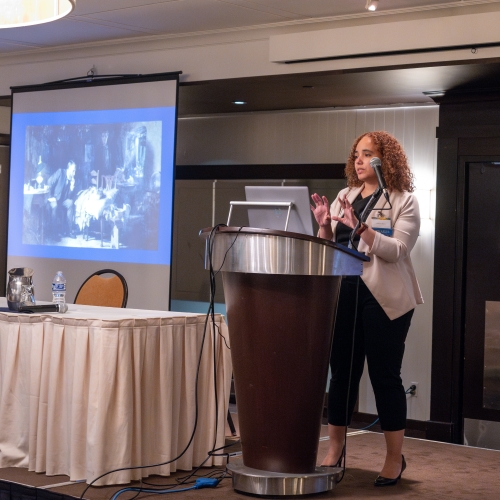 Following an enjoyable lunch, the group reconvened to hear Dr. Catherine Morris discuss differences between cardiac imaging and autopsy findings. With cardiovascular disease, the most prevalent cause of death in the world, it is not uncommon for individuals with a “clean bill of health” to die from a cardiac event shortly thereafter. This is due to the difficulty encountered when imaging a moving object buried in the chest, between lungs, and tilting toward the back. It can be difficult to get complete and clear images. The autopsy often finds evidence of disease imaging is unable to capture.
Following an enjoyable lunch, the group reconvened to hear Dr. Catherine Morris discuss differences between cardiac imaging and autopsy findings. With cardiovascular disease, the most prevalent cause of death in the world, it is not uncommon for individuals with a “clean bill of health” to die from a cardiac event shortly thereafter. This is due to the difficulty encountered when imaging a moving object buried in the chest, between lungs, and tilting toward the back. It can be difficult to get complete and clear images. The autopsy often finds evidence of disease imaging is unable to capture.
Dr. Christopher Milroy then gave a presentation on the 21st Century Autopsy and discussed the importance of history, scene, and all the various aspects of the autopsy. He summarized by saying that most homicides are easy to solve. They may take time, but they are easy. There is the triangle of death: natural causes, drugs and alcohol, and trauma. Deaths may be caused by any number of these.
The medical examiner and the media was the next topic of the day, presented by Dr. Carl Schmidt. What you read and hear is probably not what happened, he asserted. The news is impacted by social stigmas, public perceptions of death investigation (think CSI), politics, and assumptions that medical examiners have access to functions that they do not have, such as the law enforcement network for fingerprint identifications. He encouraged the audience to always conduct themselves honorably and not to throw others “under the bus” in the process. When mistakes happen, address the problem rather than attacking the person.
A series of brief case reports wrapped up the conference. Dr. Jeffrey Jentzen’s case reports included atypical asphyxia cases of an accidental death during a religious exorcism practice and an accidental suffocation of an individual in police custody when a biohazard hood was mistakenly used instead of a spit hood following a spitting incident. Dr. Jacquline Parai presented a case study of an individual who was found shot between dumpsters, which turned out to be suicide caused by a ball bearing projectile from a homemade gun. Dr. Daniel Alt’s case was a home explosion due to a propane leak and the types of injuries sustained.
As you can see, the variety of cases and material covered were both educational and interesting! We are looking forward to next year’s conference. Be sure to watch for our Save the Date notices when the dates are finalized.